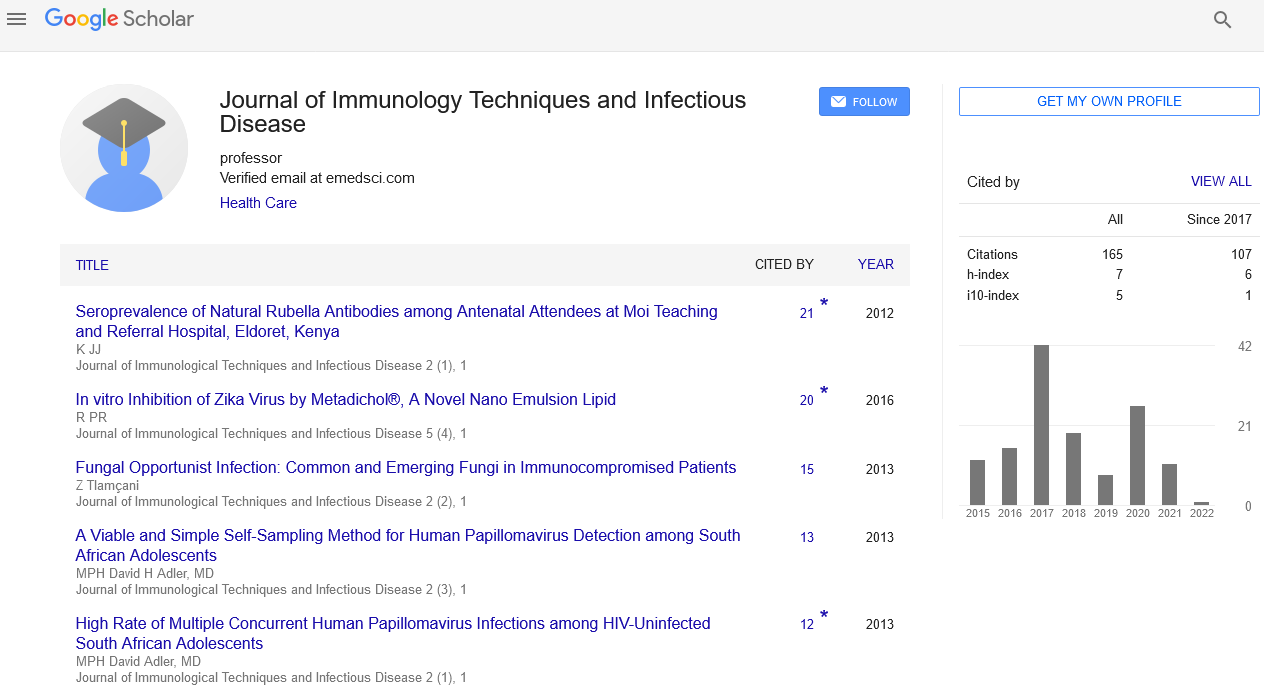Influenza preparedness in Zambia
Bruno Stephen July Phiri
University of Zambia, Zambia
: J Immunol Tech Infect Dis
Abstract
Zambia is at risk of experiencing influenza outbreak because of movement of people from countries that periodically experience the disease in Africa and other continents. On the other hand, migratory birds especially waterfowl has added another dimension to threaten Zambia face. This could pose a threat to poultry and even humans. The objective of this abstract is to highlight how ready Zambia is in dealing with possible influenza outbreak as at now. From 2005 to 2013 when there was a threat of H5N1 and H1N1 pandemic, active surveillance was conducted especially in high risk areas of Zambia such as border areas, around major water bodies with large presence of migratory birds, markets and hospitals. This generated a number of influenza subtypes H1N1 and H3N2 in humans between 2008 and 2009 and H3N8, H4N6, H6N2, H9N1, H11N9, H6N1 and H9N1 from wild migratory waterfowl. The influenza control simulation exercise conducted in 2009 showed that as a country Zambia was not very ready to deal with the possible influenza outbreak and it was noted that all stake holders needed to do more to be prepared for any eventuality. Major gaps identified during the exercise included poor communication, inadequate laboratory infrastructure and need for equipment and laboratory reagents for diagnosis of the disease. To be able to prepare for the possible influenza outbreak, a good national influenza control plan is needed because the old one prepared in 2005 is outdated. As a result of this gap, there are limited active surveillance and other influenza prevention activities being conducted across the country. More research needs to be done to understand the ecology and the epidemiology of influenza viruses circulating in both humans and animals in Zambia to be able to prevent and control the possible disease outbreak. This calls for effective international partnerships between Central Veterinary Research Institute in Zambia with possible funders in the area of influenza related research.
 Spanish
Spanish  Chinese
Chinese  Russian
Russian  German
German  French
French  Japanese
Japanese  Portuguese
Portuguese  Hindi
Hindi 
